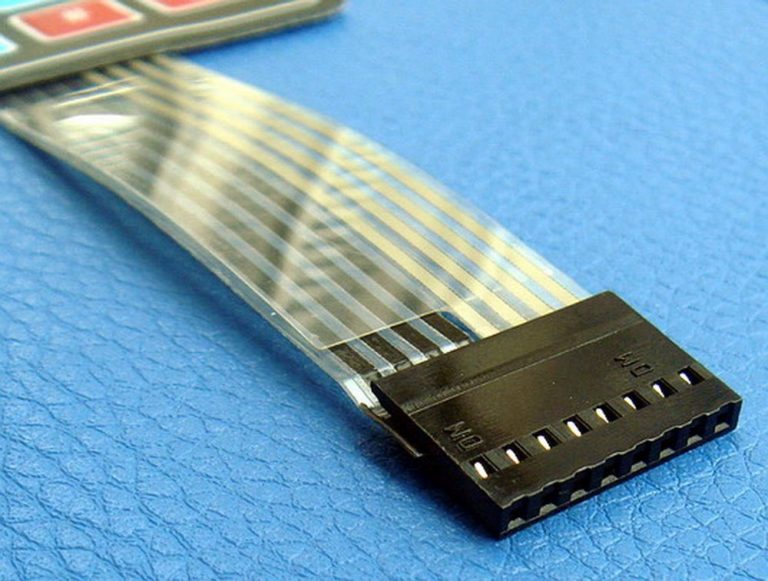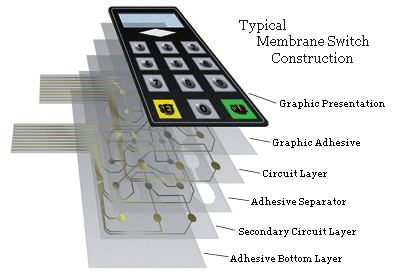Everything About Membrane Switch: Understanding Its Layout and Performance
When you consider the control user interfaces in contemporary devices, membrane buttons typically enter your mind. These parts are greater than simply switches; they mix style and performance seamlessly. Understanding just how they function and what makes them reliable can transform your viewpoint on everyday electronics. Yet, there are nuances to their design and efficiency that you may not understand. Allow's discover what sets membrane changes apart from various other control systems.
What Are Membrane Buttons?

Membrane buttons can additionally be personalized pertaining to form, dimension, and graphics, enabling producers to produce distinct user interfaces customized to certain items. In general, membrane switches play a considerable function in enhancing customer experience throughout a large selection of applications.
Exactly How Membrane Changes Job
When you push a key on a membrane layer switch, it activates a simple yet effective system. The top layer, often made of versatile material, lowers onto a conductive layer beneath it. This activity bridges the gap between conductive traces, finishing an electrical circuit. As quickly as the circuit closes, it sends a signal to the tool's controller, which translates your input.
You'll see that the tactile feedback differs based upon the switch layout, providing either a soft click or a much more noticable action. Once you launch the secret, the membrane returns to its original placement, reopening the circuit and quiting the signal. This process occurs almost instantaneously, ensuring a receptive user experience.
Membrane switches are prominent as a result of their sturdiness and resistance to dust and moisture, making them perfect for different applications, from family devices to clinical devices. Understanding this operation assists you value their widespread usage.
Trick Elements of Membrane Layer Buttons
Comprehending the key components of membrane layer switches is fundamental for understanding their performance and design. At the core, you'll find the graphic overlay, which provides the aesthetic user interface for customers. Under that, there's a spacer layer that divides the circuit layers, guaranteeing that they don't make get in touch with up until pressed. The circuit layer is where the magic happens; it consists of conductive traces that finish the circuit when you push the switch. An additional essential element is the glue backing, permitting the button to stick to surface areas securely. Lastly, the protective layer shields against environmental variables and put on, expanding the button's life expectancy. Each element plays a considerable role in guaranteeing trustworthy performance and user communication. By comprehending these elements, you'll gain understanding right into how membrane layer switches over run and their importance in numerous applications.
Products Made Use Of in Membrane Layer Change Design
The performance and sturdiness of membrane layer switches heavily depend on the materials used in their design. You commonly encounter polyester and polycarbonate as primary substrates because of their outstanding stamina and adaptability. These products resist scratches and chemicals, making them optimal for requiring environments.
The conductive layers frequently utilize silver or carbon, picked for their reliability and conductivity. membrane switch manufacturer. Silver supplies premium performance, while carbon is a cost-effective option. For the overlay, you may take into consideration a matte or glossy coating, depending on your aesthetic requirements and customer experience
Make particular to select adhesives that stand up to ecological aspects like temperature and humidity. Picking the right materials will certainly assure your membrane switch stands the examination of time.
Design Factors To Consider for Membrane Switches
While creating membrane layer buttons, it's vital to think about different variables that affect their functionality and individual experience. Start by concentrating on the format and button dimension; make sure they're user-friendly and easy to navigate. Think about the tactile feedback you want to offer-- will users require an obvious click or a softer touch? Furthermore, think of the materials you'll utilize, as they'll impact sturdiness and aesthetic appeals.
Do not neglect the visuals layout; clear labeling and color comparison are substantial for visibility. Verify your design accommodates environmental aspects, like wetness or temperature level variants, which could affect efficiency. Ultimately, keep in mind the importance of testing prototypes with genuine customers to gather feedback and make needed changes. This repetitive procedure helps you fine-tune the style, validating it fulfills both useful and aesthetic demands effectively. By very carefully taking into consideration these components, you'll develop a membrane layer button that boosts use and satisfaction.
Applications of Membrane Buttons
Membrane buttons are flexible components found in different applications, from click to investigate commercial devices to consumer electronic devices. You'll see their effect in machines that require durable user interfaces and in gadgets that benefit from sleek designs. Recognizing these applications assists you appreciate the functionality and usefulness of membrane layer switches in day-to-day innovation.
Industrial Devices Use
When you're seeking to enhance the capability of industrial devices, membrane layer buttons provide a reputable service that incorporates toughness with straightforward style. These switches are best for harsh settings, providing resistance to dust, dampness, and chemicals. You'll find them in control panels for producing equipments, cooling and heating systems, and medical tools, where accuracy and responsiveness are important. Their low profile implies they fit effortlessly into different devices, saving valuable area while keeping ease of use. With customizable graphics and backlighting options, you can produce an intuitive user interface for operators, boosting performance and safety and security. Plus, their lengthy life-span minimizes maintenance expenses, making them a wise financial investment for your industrial applications. Embrace membrane switches to improve your procedures and enhance general performance.
Customer Electronics Integration
In the domain of consumer electronic devices, membrane layer buttons play a crucial function in boosting customer interaction and tool functionality. You'll locate them in gadgets like microwaves, remote controls, and video gaming consoles, giving a smooth means to communicate with innovation. Their streamlined layout enables very easy integration right into various products, making controls intuitive and straightforward. With their capability to integrate graphics and backlighting, you can appreciate a modern-day visual that matches the gadget's overall appearance. Membrane layer buttons likewise guarantee sturdiness and resistance to dust and wetness, expanding the life expectancy of your electronics. By choosing membrane layer switches, you enhance not simply the functionality however likewise the style of your devices, making daily interactions smooth and satisfying.
Advantages and Downsides of Membrane Switches
While membrane switches offer an array of benefits, they additionally feature some drawbacks that you need to think about. One substantial benefit is their compact style, making them excellent for space-constrained applications. i was reading this They're also affordable, offering a sturdy solution with a reduced manufacturing cost. On top of that, their smooth surface area is easy to tidy, boosting hygiene in environments like health centers.

However, there are disadvantages. Membrane layer switches can have a shorter life-span compared to mechanical switches, especially under hefty usage. They can also be much less tactile, which could impact user feedback throughout procedure. In addition, if damaged, repairing them can be difficult and frequently requires complete replacement. Ultimately, their level of sensitivity to severe temperature levels and ecological problems might limit their performance in particular settings. Stabilizing these advantages and disadvantages will assist you figure out if membrane buttons are the appropriate suitable for your project.
Regularly Asked Inquiries
Exactly How Long Do Membrane Switches Generally Last?
Membrane changes generally last in between 5 to 10 years, relying on usage and environmental conditions. You'll desire to examine factors like wear, direct exposure to moisture, and temperature fluctuations to determine their durability properly.
Can Membrane Switches Be Customized for Particular Designs?
Yes, you can tailor membrane layer switches to fit specific styles (membrane switch manufacturer). You'll have the flexibility to choose colors, shapes, and formats that match your job's requirements, guaranteeing they mix perfectly with your overall visual
What Is the Expense Range for Membrane Layer Change Manufacturing?
The expense variety for membrane layer button manufacturing typically drops in between $1 and $10 each, relying on factors like layout complexity, amount, and products. You can obtain quotes from suppliers to locate the most effective alternative.

Are Membrane Changes Waterproof or Immune?
Membrane switches can be designed to be water resistant or resistant, depending on materials utilized and building and construction techniques. If you require them for wet settings, ensure you define those needs during the design procedure.
Exactly How Do Membrane Layer Switches Contrast to Typical Buttons?
Membrane layer these details buttons are usually thinner and much more versatile than traditional switches, using a smooth layout. They're frequently simpler to clean and incorporate, yet might not offer the responsive feedback you're utilized to with mechanical alternatives.
Conclusion
